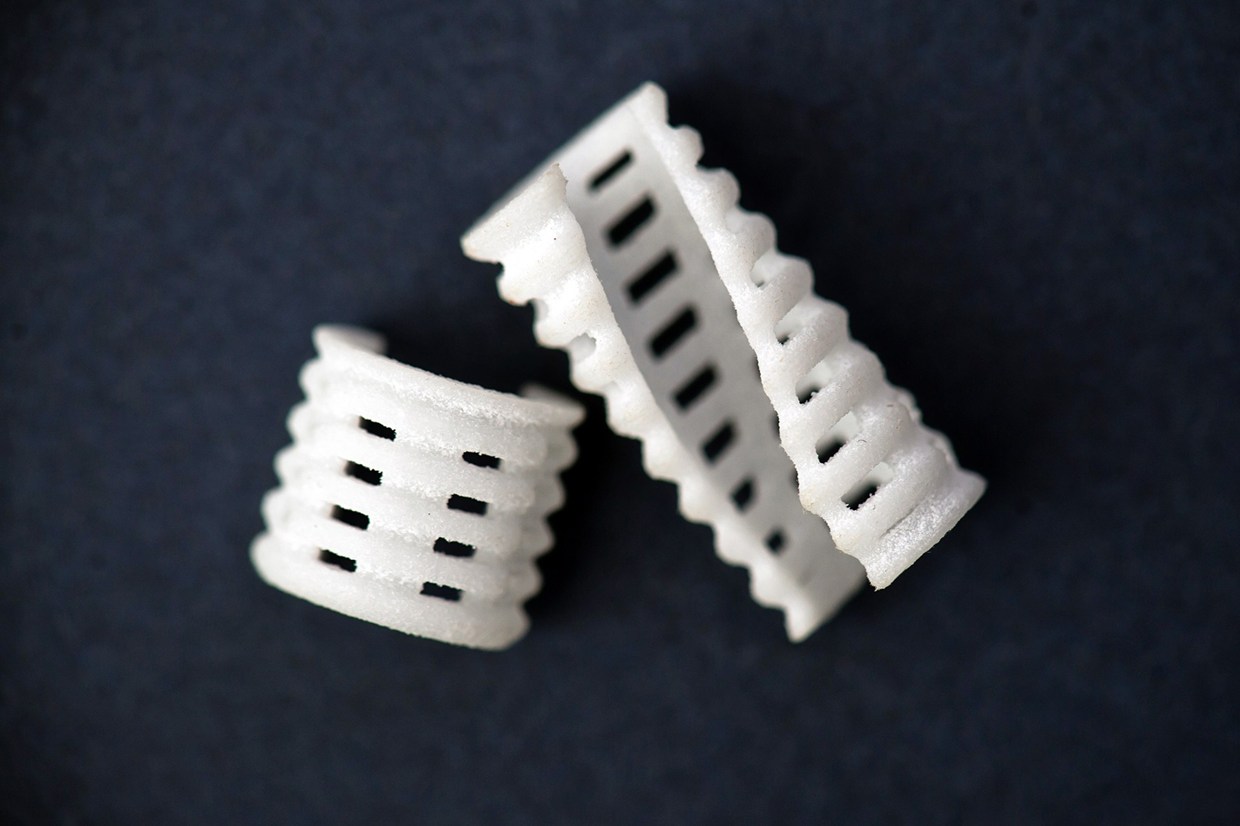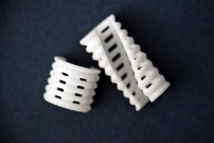Thestrategist.media – 06 May 2015 – Alexandria Hein of Fox News reports about a research study on “3D- printed” devices being saviour life threatening medical conditions which was published by the “American Association for the Advancement of Science”. It seems for the first time ever, physicians have “treated infants” suffering from “life-threatening airway disease” with a device that were printed out of a 3D printer technology.
The said printed device was “an airway splint” which was custom made to match the anatomy of each child. Moreover, the airway-splints were designed so that they would adapt to the growing tissues over a period of time whereby finally the body would absorb them into the respective systems. In fact, doctors considered one such patient among the lot to be completely cured within an interval of three years since the splint implantation took place.
The life-threatening “airway disease” can either be caused by “trachealbronchomalacia” or by weakened airways which eventually begin to collapse whereby one among every two thousand children get affected worldwide. The said patients face difficulties in breathing, in order to ensure the smooth breathing of the subjects, “breathing tubes are inserted into their necks” which are the connected to “artificial ventilators”. The children suffering thus could land up in an intense care unit even if they catch “a simple cold”.
The experimentations of the doctors to seek “a cure for trachealbronchomalacia” resulted in creating a 3D printed splint device. The said airway-splint has been designed in a flexible manner which would promote “the growth of the airway over time” through geometric patterns, whereby the device is suppose to get absorbed “into the body” of the subject.
The material used to construct the splint is named polycaprolactam, which categorised under the “family of polymers”, commonly known as “polyesters”. The said material has a fluid absorbent capacity whereby it is designed to “breakdown” eventually. Moreover, the process of typical “breakdown” would take place within a span of three to four years time frame. In the meantime, the subject or the child is likely to outgrow “the condition”; consequently, he or she would lead “a healthy life”.
The subject of this experiment were “three infants”, namely Garrett Peterson, Ian Orbich and Kaiba Gionfriddo, all “between 3 and 16 months old” in age. They had to spend months altogether in the intense care-unit wherein they had to be given “heavy sedation, narcotic and even paralytics to stay alive”. In a senior “professor of pediatric otolaryngology”, Dr. Glenn Green’s words:
The said printed device was “an airway splint” which was custom made to match the anatomy of each child. Moreover, the airway-splints were designed so that they would adapt to the growing tissues over a period of time whereby finally the body would absorb them into the respective systems. In fact, doctors considered one such patient among the lot to be completely cured within an interval of three years since the splint implantation took place.
The life-threatening “airway disease” can either be caused by “trachealbronchomalacia” or by weakened airways which eventually begin to collapse whereby one among every two thousand children get affected worldwide. The said patients face difficulties in breathing, in order to ensure the smooth breathing of the subjects, “breathing tubes are inserted into their necks” which are the connected to “artificial ventilators”. The children suffering thus could land up in an intense care unit even if they catch “a simple cold”.
The experimentations of the doctors to seek “a cure for trachealbronchomalacia” resulted in creating a 3D printed splint device. The said airway-splint has been designed in a flexible manner which would promote “the growth of the airway over time” through geometric patterns, whereby the device is suppose to get absorbed “into the body” of the subject.
The material used to construct the splint is named polycaprolactam, which categorised under the “family of polymers”, commonly known as “polyesters”. The said material has a fluid absorbent capacity whereby it is designed to “breakdown” eventually. Moreover, the process of typical “breakdown” would take place within a span of three to four years time frame. In the meantime, the subject or the child is likely to outgrow “the condition”; consequently, he or she would lead “a healthy life”.
The subject of this experiment were “three infants”, namely Garrett Peterson, Ian Orbich and Kaiba Gionfriddo, all “between 3 and 16 months old” in age. They had to spend months altogether in the intense care-unit wherein they had to be given “heavy sedation, narcotic and even paralytics to stay alive”. In a senior “professor of pediatric otolaryngology”, Dr. Glenn Green’s words:
“There was no cure and life expectancies for each of these children were grim.”
Green along with his colleagues began the experiment procedures clearing usage of splint from “the Emergency Use Exemption by the Food and Drug Administration (FDA)”. Subsequently, 3D virtual images through “CAT scan” were used to correctly create the models of the 3D printed airways. The procedure, involving “a lot of ‘guesswork’”, is said to provide a ground breaking research as never before it has been “performed in animals or humans”.
After the implantation the doctors kept close watch on the patients and monitored the growth and performance of the airway splints regularly. Consequently, one out of the three seems to be completely “cured of trachealbroncomalacia” while the body has absorbed the splint; whereas the second doesn’t need “ventilator support” anymore” while the third one shows steady signs of improvements. As per Morrison “the medical possibilities with 3D-printing are limitless”, he adds:
“With patient-specific computer-aided design and modeling, you can really create anything that you could imagine to eventually become a medical device.”



















